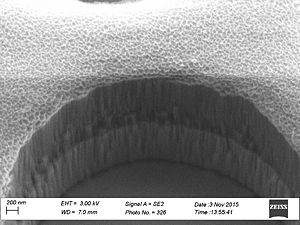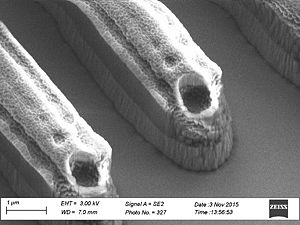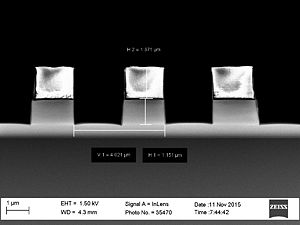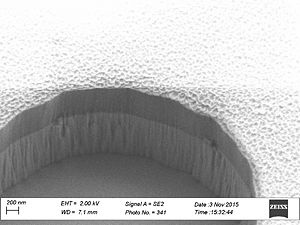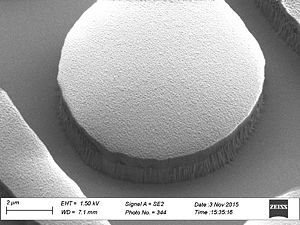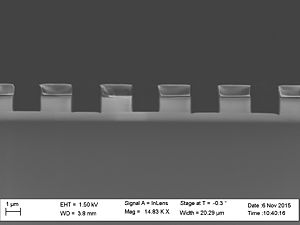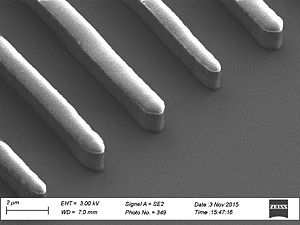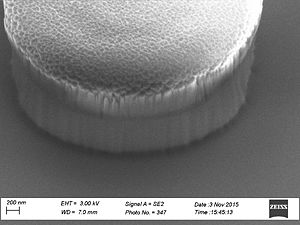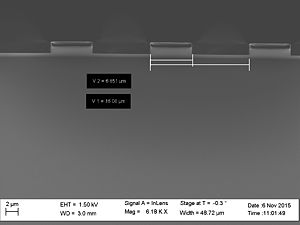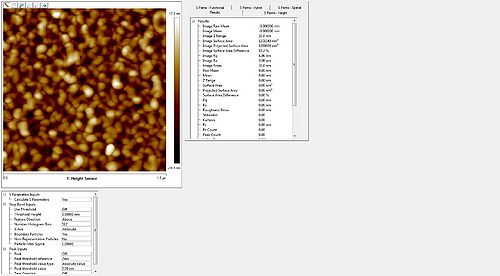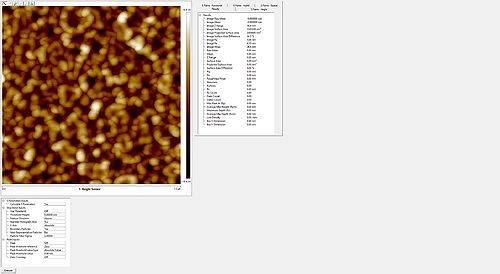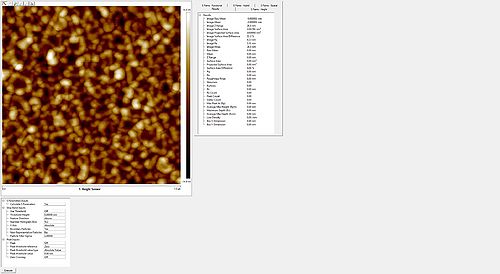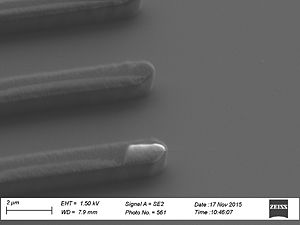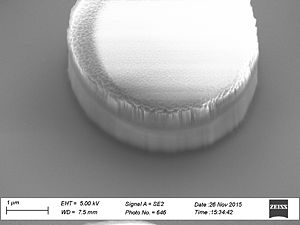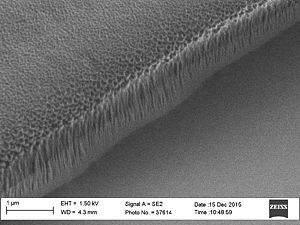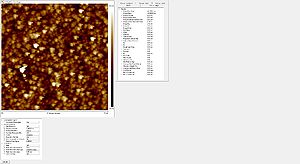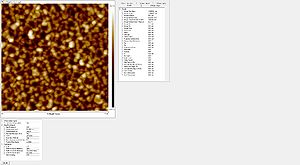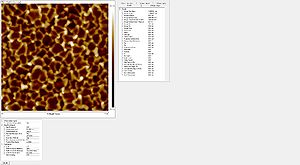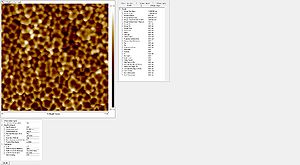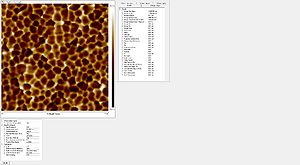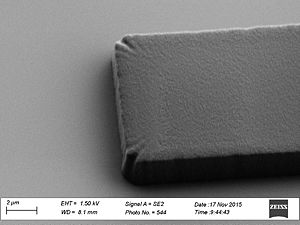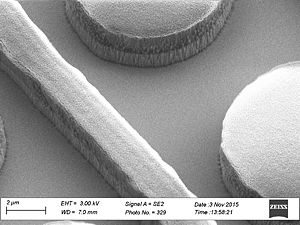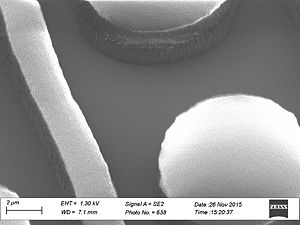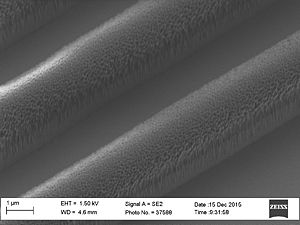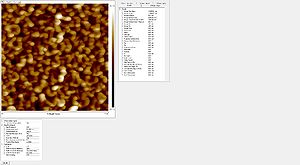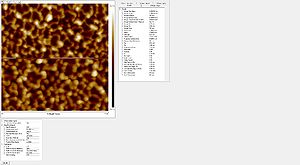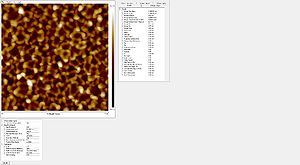Specific Process Knowledge/Etch/Etching of Silicon Oxide/SiO2 etch using AOE/Standard recipe with resist mask/Striation
Feedback to this page: click here
Striation: Side wall roughness (This work was done in April 2016 by Berit Herstrøm, DTU Nanolab (bghe))
When etching silicon oxide rough sidewalls are most often seem. This effect is called striation, because it creates stripes along the etched profile. The literature gives several explanations for this. The two main courses seems to be:
- deposition on the sidewalls as the etch proceeds, coursing masking effects
- This can come from flour-carbon polymers from the plasma (some this this layer protects from striation)
- Re-deposition of sputtered SiO2
- damage of the resist mask coursed by plasma heating and/or interaction with the resist. This pattern change at the edge gets transferred to the oxide profile during the etch.
- Resist edge gets rough during etching due to plasma heating (out-gassing while the surface get UV hardened. This makes the resist crumple).
- The edge can maybe also get roughened due to sputtering.
This work is focused on trying to improve the resist to avoid the resist damage during etching. From a previous test it has been seen that pre baking the resist AZ1452e at 150 degrees for 5 min can prevent the crumpling of the resist, See results HERE. However this makes the resist flow so the edge profile will not remain vertical.
- First I characterized how our present three standard resists (AZ5214E, AZ nLof and AZ Mir) looked after an SiO2 etch in the AOE (recipe: SiO2_mres). The characterization was done by
- SEM: to visually see the SiO2 sidewall roughness and how the resist looks after etch. This only gives a qualitative characterization. See HERE
- AFM: to get at quantitative value for the resist roughness after the etch. I have seem in the literature that this measure reflects the sidewall roughness of the resist. See HERE
- Second we tried to toughen the resist by cross linking (by UV flood exposure after development) and heat treatment. Heat treatment at 110 degrees to effectuate the cross linking and heat treatment at 150 degrees to further out-gas and harden the resist. This was only done to AZ5214E and AZ nLof as AZ MIR?
Sidewall roughness and resist surface after AOE etch viewed with SEM for the three resists: AZ5214E, AZ nLof and AZ MIR
- Striation with different resists used
AZ nLof resist, tilted 30 degrees. Resist is rough after etch and striation is seen on both the resist and the SiO2. It looks less servere on the SiO2, this can be due to the fact that the resist profile on on a negative resist is negatively tappered. When etching the effect of a bad resist edge will smoothed in the bottom of the trench as the resist is thinned and thereby shrinked. But maybe it is the SEM quality.
Roughness of the resist after AOE etch measured with the AFM of the three resists: AZ5214E, AZ nLof and AZ MIR
- From these AFM measurements it looks like AZ nLof is least effected in roughness by the AOE etch, this could make sense because it is already cross linked
